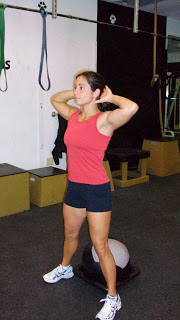Table of Contents[Hide][Show]
 Need to unload some weight, tone up and get your body moving? It doesn’t need to be complicated–there are many excellent workouts that can be done with bodyweight alone. This is Part 1 of a 3 Part series which will cover the basic bodyweight exercises in the areas of legs, push and pull and how to incorporate them into your routine.
Need to unload some weight, tone up and get your body moving? It doesn’t need to be complicated–there are many excellent workouts that can be done with bodyweight alone. This is Part 1 of a 3 Part series which will cover the basic bodyweight exercises in the areas of legs, push and pull and how to incorporate them into your routine.
The “Wheels”
The legs are the largest muscles in the body, the farthest from the heart and take the most energy to work. Don’t be like many people you may see in the gym training only the “show” or “beach” muscles such as the arms and chest. Balance and symmetry are key to improving the way you look not to mention the way you feel and move. Get your wheels moving and you are well on the road in your fitness program.
Let’s start with the squat; undisputedly one of the very best exercises period. Anyone can squat–we were born to squat, look at our ancestors. You doubt this? Let me ask you a question. Do you go to the bathroom–how do you get up off the toilet? That’s a squat folks. We do it everyday without realizing it. If you want to pick something up off the floor you either have to hinge at the hips or squat down to pick it up. It is a basic movement–you don’t need weight but you need to be mobile and flexible enough to reach a full squat below parallel. Proper form and technique are imperative or injuries and joint issues can arise. Like anything, it must be done right. . .
Squat
- Start with feet approximately shoulder width apart and toes pointed slightly out.
- Core is engaged, chest is up, back is slightly arched and gaze is straight ahead.
- Squat down pushing your butt out behind you until you reach the desired depth of below parallel.
- Keep your knees aligned with your toes and do not let them bow inward.
- Push through your heels and extend your knees until your legs are straight again.
Lunge: Step forward with the right leg and come up onto the ball of the left foot. Bend both knees until the left knee kisses the ground (right thigh parallel and left thigh perpendicular) taking care to not allow the right knee to pass over the right angle as shown in the picture. Press through the right heel and bring the right leg back in to the left. Repeat on other leg.
Jump squat: An advanced movement. As the name implies, you would explode out of the bottom position through the heels by jumping up. To help keep the torso erect, hands may be placed behind the head.
Jump lunge: An advanced movement. As the name implies, you would explode out of the bottom position and switch legs.
How to Incorporate
Beginners: Learn the movements, study the photos, read through the tips and how to and focus more on technique than how many or how fast. Start with 1-2 sets of 10-15 reps of the squat and lunge and perform 1 to 3 times per week, allowing at least 1 day of recovery. Listen to the body, more is not always better.
Intermediates: If you already have fairly good basic squats work on your depth. Do 3-4 sets of 15 to 25 reps, resting 60 to 90 s between sets.
Advanced: Combine the moves into a circuit such as 24 squats/24 alternating lunges/24 alternating jumping lunges/12 jump squats then rest 60 to 90 seconds and repeat 2-4 times for a blistering leg workout.
Sample Lunge and Squat Workouts
Walking lunges 100, 200 or 400 m for time
Tabata squat/lunge intervals: 20 s of squats, rest 10 s, 20 s of lunges, rest 10 s. Repeat, alternating for a duration of 4 to 8 minutes
3 RFT: 10-25 squats / walk, jog or run 200-400 m / 10-15 lunges per leg. 3 Rounds for Time
Adjust times, distances and intervals above to meet your starting fitness level. As with any type of program the goal is to progress; push yourself appropriately but push yourself. Sweat and effort are necessary. Stay tuned for next week and Part 2 or the Pushing Progression.








Thanks for the feedback everyone! Stay tuned for the push series. . .
Thanks Paula! Love the levels and especially the beginner stuff – that's what I need as it's been way too long since I've done these. The explanation of how to do this is great and easy to follow and I just did my first set of each! Feeling the burn and tomorrow will feel those muscles that have not been worked for too long! Thank you!!
Hi Paula,
This is all starting to make more sense to me–yay! My biggest battles are always with myself, but as someone keeps saying to me "if you always do what you've always done, you'll always get what you've always gotten". (I've been known to spout that off to others, time for me to hear it!). Thanks for the articles and help!
Thanks for this, Paula. I appreciate the explanation and will put it into action. Keep these posts coming!
Thank you! This is very helpful. I appreciate the suggestions for levels. Please continue to give us little pieces at a time. It does take time and effort.